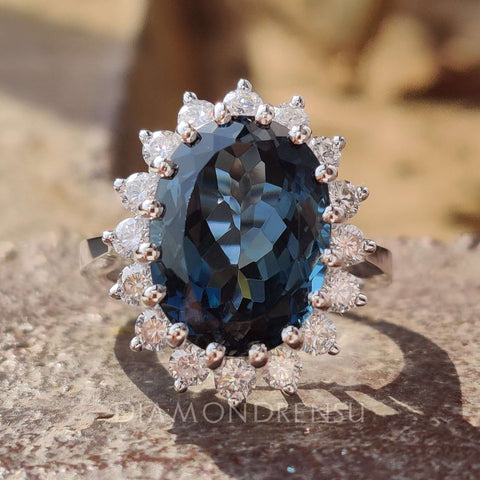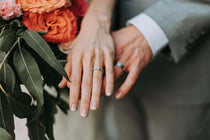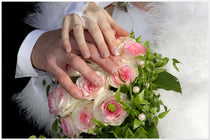Wearing a ring on your right ring finger can carry various meanings depending on the cultural context, personal significance, and even psychological interpretation. In certain cultures, a ring on this finger symbolizes professional status or educational achievements. For example, in some countries, engineering or technology graduates receive a ring to wear on this finger as a symbol of their profession. It's also not uncommon for rings on the right ring finger to signify certain milestones in life or personal commitments that are important to the wearer.
Your choice to adorn your right ring finger may also reflect your relationship status or personal preference. In some Eastern European and South American cultures, wearing a wedding band on the right ring finger is traditional, indicating that the individual is married. Contrastingly, in many Western cultures, the left hand is typically reserved for this purpose. The decision to wear a ring on the right ring finger might also be a simple matter of aesthetics or comfort, particularly for those who are left-handed and find it more practical to wear rings on their non-dominant hand.
Understanding the implications of ring placement can help you navigate social situations more effectively and make informed choices about your jewelry. Whether your ring signifies a personal milestone, a professional achievement, or simply your sense of style, the right ring finger serves as a versatile canvas for personal expression.
Cultural Significance
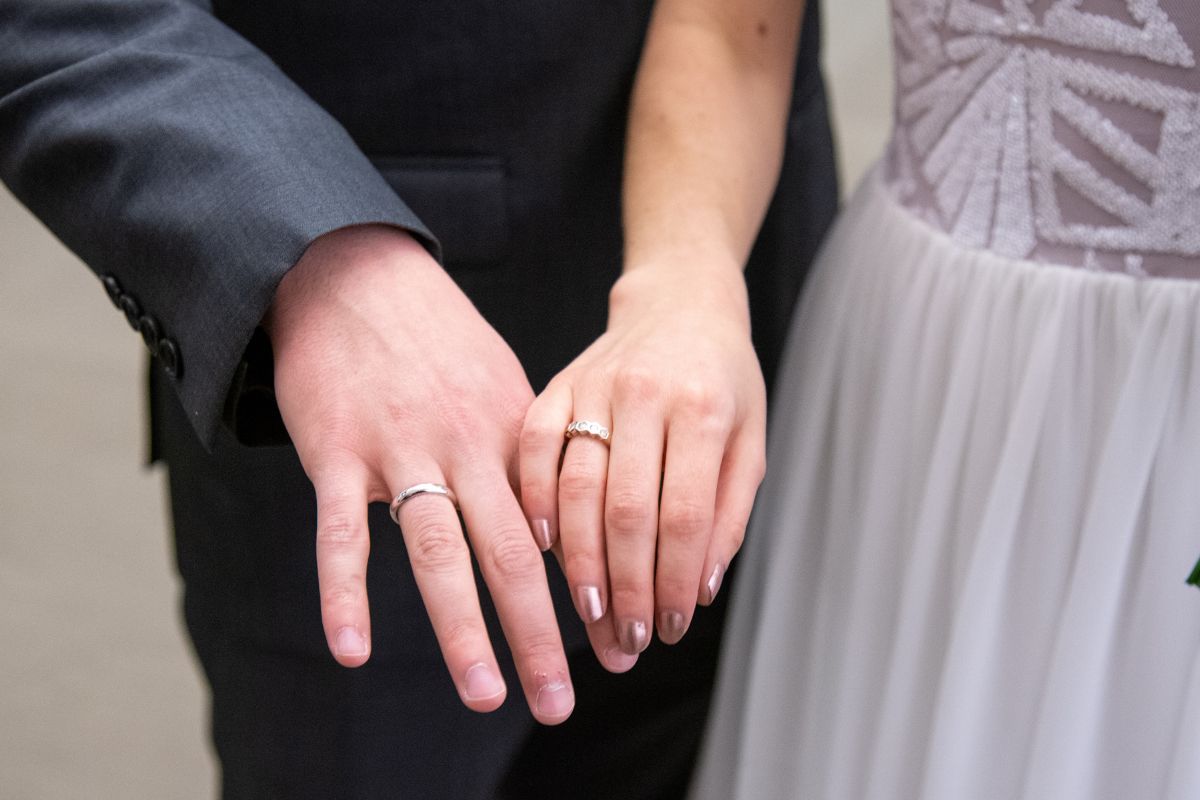
The ring worn on the right ring finger carries deep cultural significance that varies across the globe, deeply rooted in tradition, historical context, and religious beliefs. As you explore this symbolism, you'll find that each culture offers a unique perspective on this seemingly simple practice.
Tradition and Beliefs
In many cultures, the ring on the right ring finger signifies marital status or commitment. However, the meaning can shift significantly from one region to another. For example, in some Orthodox Christian countries such as Russia, Greece, and Serbia, it's customary for married individuals to wear their wedding bands on the right hand. This differs from most Western cultures, where the wedding ring is typically worn on the left hand.
Historical Perspective
The choice of hand and finger for ring wearing has origins dating back to the ancients. Ancient Romans believed that a vein, the 'vena amoris', ran directly from the third finger of the left hand to the heart, influencing Western tradition. However, in Germany and Austria, you'll find that engagement rings are worn on the left hand and then moved to the right hand after marriage, highlighting a unique blend of historical influence and cultural evolution.
Global Variations
India reveals another layer of cultural complexity, where the left hand is sometimes considered inauspicious for auspicious ornaments like wedding rings. Thus, wearing a ring on the right hand becomes more than a personal preference—it's a reflection of cultural tradition. Yet, this is not a uniform practice across all Indian cultures, illustrating the importance of regional customs. Conversely, in Western countries, wearing a ring on the right hand might not signify marriage but could represent engagement or promise, a personal statement of style, or even a professional achievement.
Social and Personal Implications
When you wear a ring, especially on the ring finger of your right hand, it often conveys certain social and personal messages. Whether it's showcasing your marital status or expressing individuality, the ring on this finger has diverse implications.
Marital and Relationship Status
In some cultures and religions, you display a wedding band on your right ring finger to indicate that you are married. This can vary from country to country, with some traditions reserving the left hand for engagement rings and the right for wedding rings. Wearing a ring on the ring finger of the right hand can signal to others your commitment to a partner or that you are in a serious relationship.
Symbolic Representations
The right ring finger often carries symbolism related to love and relationships. An engagement ring on this finger might represent a pending marriage, while a promise ring could symbolize a vow or a future commitment. Rings on this finger can serve as powerful symbols of love, relationship status, and the promise of a shared future.
Self-Expression and Independence
Choosing to wear a ring on your right ring finger can also be a form of self-expression and a declaration of independence. It might not signify relationship status at all but could be a personal meaning or statement. For instance, a ring symbolizing self-love or confidence can be a personal reminder, while for others, it might be a status symbol reflecting success or personal achievements.
Anatomical and Practical Considerations
| Consideration | Description |
|---|---|
| Anatomical Fit | The right ring finger is often chosen for its anatomical fit, as it tends to be similar in size to the left ring finger. |
| Dominant Hand | For individuals with a dominant right hand, wearing a ring on the right finger may reduce wear and tear on the ring due to less frequent use. |
| Cultural Significance | In some cultures, wearing a ring on the right finger may have specific cultural or religious significance. |
| Comfort and Functionality | Choosing the right finger for a ring can enhance comfort and functionality, especially for those who use their left hand more actively. |
| Occupational Considerations | Individuals with specific occupations or activities that involve the left hand may prefer to wear a ring on the right finger for practical reasons. |
| Personal Preference | Ultimately, the decision to wear a ring on the right finger is a matter of personal preference, allowing individuals to express their style and comfort. |
| Balance and Symmetry | Some individuals choose to balance the appearance of rings by wearing them on both hands, creating a symmetrical and aesthetically pleasing look. |
| Celebratory Rings | For certain celebrations or achievements, individuals may choose to wear commemorative rings on the right finger as a symbol of accomplishment. |
| Fashion and Trends | Current fashion trends and individual style choices can also influence the decision to wear a ring on the right finger. |
| Occasional Wear | Some individuals reserve the right finger for special or occasional wear, such as cocktail rings or statement pieces. |
When choosing to wear a ring on your right ring finger, it's important to take into account the anatomical aspects and practicality of daily activities. This is because each hand and finger has a distinct role and sensitivity which can affect both comfort and utility.
Comfort and Wearability
Wearing a ring on your right ring finger can offer different sensations compared to wearing one on your left due to potential differences in usage and dominance. For example:
- Right Hand: Often the dominant hand for many activities, meaning rings may interfere more with tasks.
- Left Hand: Typically less involved in precision work, potentially making rings less obtrusive.
To maintain comfort, consider:
- The fit of the ring, as your right ring finger may be a different size than your left.
- The ring's design, opting for a slim profile to minimize interference with your right index finger or your right pinky finger.
Dominance and Dexterity
The dominant hand is generally the one you use for most activities, which can influence the practicality of wearing a ring on the right ring finger.
- For right-handed individuals, wearing a ring on the dominant hand may feel more cumbersome and affect dexterity.
- The fourth finger is not as commonly used solo as the right index finger or right middle finger, hence a ring might be less intrusive here than on other fingers.
It’s also worthwhile to note cultural and personal preferences:
- In some cultures, the right ring finger is the traditional choice for certain rings, such as the wedding ring finger in some Eastern European countries.
- The historical belief that a vein (vena amoris or vein of love) ran directly from the fourth finger to the heart has influenced the selection of the engagement ring finger in many Western cultures, although this belief is anatomically incorrect.
Selecting the right size and style for your right ring finger is essential to balance comfort with personal expression, considering how the use of your hand might adapt with a ring in place.
Aesthetic and Design Factors
When considering a ring for your right ring finger, you should be mindful of the design elements and the aesthetic value it adds to your personal style. The choice of metal, the presence of gemstones, and the ring’s overall design all contribute to the statement you make with this piece of jewelry.
Jewelry and Accessory Trends
Jewelry trends evolve, and your choice of ring should resonate with contemporary styles while aligning with your individual tastes. Personal style and balance are key; a pinky ring might be subtle, while a cocktail ring offers more bling. Popular metals include gold, silver, and platinum. Diamond rings have always been in vogue, but other gemstones are equally captivating and can add a pop of color. In terms of design, minimalist bands and eternity rings embody sophistication, whereas bold diamond nexus stones or intricate metalwork reflect a more pronounced aesthetic.
Symbolic and Heirloom Jewelry
Rings often carry a deeper meaning beyond their aesthetic appeal. A ring on your right ring finger could represent a personal achievement or mark a special occasion. Symbolic jewelry, such as a piece with your family crest or stones that are family heirlooms, connects you to your heritage and personal history. If you're choosing a ring with diamonds or other precious gemstones, consider the implications of those elements—diamonds can symbolize eternity, while other gemstones may have meanings tied to their color or type. The design of heirloom jewelry is usually intricate and timeless, ensuring that the ring can be passed down through generations without losing its allure or significance.
Financial and Status Aspects
Wearing a ring, especially on your right ring finger, often carries with it connotations of wealth and social standing. The type of ring you choose, as well as how and where you wear it, can communicate much about your professional status and personal power.
Expressions of Wealth and Professionalism
Wealth: Rings can be potent status symbols, indicative of your financial success. Materials such as gold, platinum, or diamonds, often signify considerable wealth. For instance, affluent individuals or those from upper social strata might choose elaborate rings encrusted with precious stones to display their economic status publicly.
- Professional Status: Your choice of ring can also speak volumes about your profession. Certain occupations are associated with distinct types of rings; for example, engineering graduates often wear an iron ring, while physicians may opt for a simple, clean band that maintains professionalism while still signifying their commitment to the medical field.
- Power and Status Symbol: In some cases, rings can be a subtle display of power or connection to influential groups. For example, the mafia is known for using rings as a means to communicate hierarchical status within the organization. On the other hand, prominent figures like Winston Churchill wore rings in a manner that both reflected their personal style and their eminent position.
- Partner: It's worth mentioning that in many cultures, wearing a ring on the right ring finger may indicate commitment to a partner, which can carry its own implications regarding your social status.
In wearing a ring on your right ring finger, you are participating in a time-honored method of non-verbally announcing your place within the social and economic hierarchies. Whether it's to convey success, occupation, or connection, the ring acts as a silent communicator of your status.
Life Events and Milestones

Adorning a ring on your right ring finger is more than a fashion statement; it often marks poignant moments in your life's journey.
Significance in Life Transitions
- Milestone: Certain rings often signify achievements such as graduations. As you transition from one phase of life to another, a class ring worn on the right ring finger can remind you of your accomplishments and the knowledge you've gained.
- Birth: A family ring may embody the birth of a child, with some parents choosing to wear a birthstone on the right ring finger to commemorate this life-changing event.
- Engagement and Wedding: While the left hand is traditionally associated with wedding rings, in some cultures, an engagement ring is initially worn on the right ring finger. After the wedding, it might be moved to the left hand, or the right can continue to symbolize engagement, especially if you're in a country where this is the custom.
- Promise Ring: A promise ring is often given to signify commitment and can be placed on the right ring finger. This token represents a pledge, whether for a future engagement or a personal vow that holds significant meaning in your life.
Each ring on your right ring finger may symbolize a unique chapter, carrying a weight of personal history and emotional resonance that commemorates your life's significant transitions.
Right Hand Rings Specifics
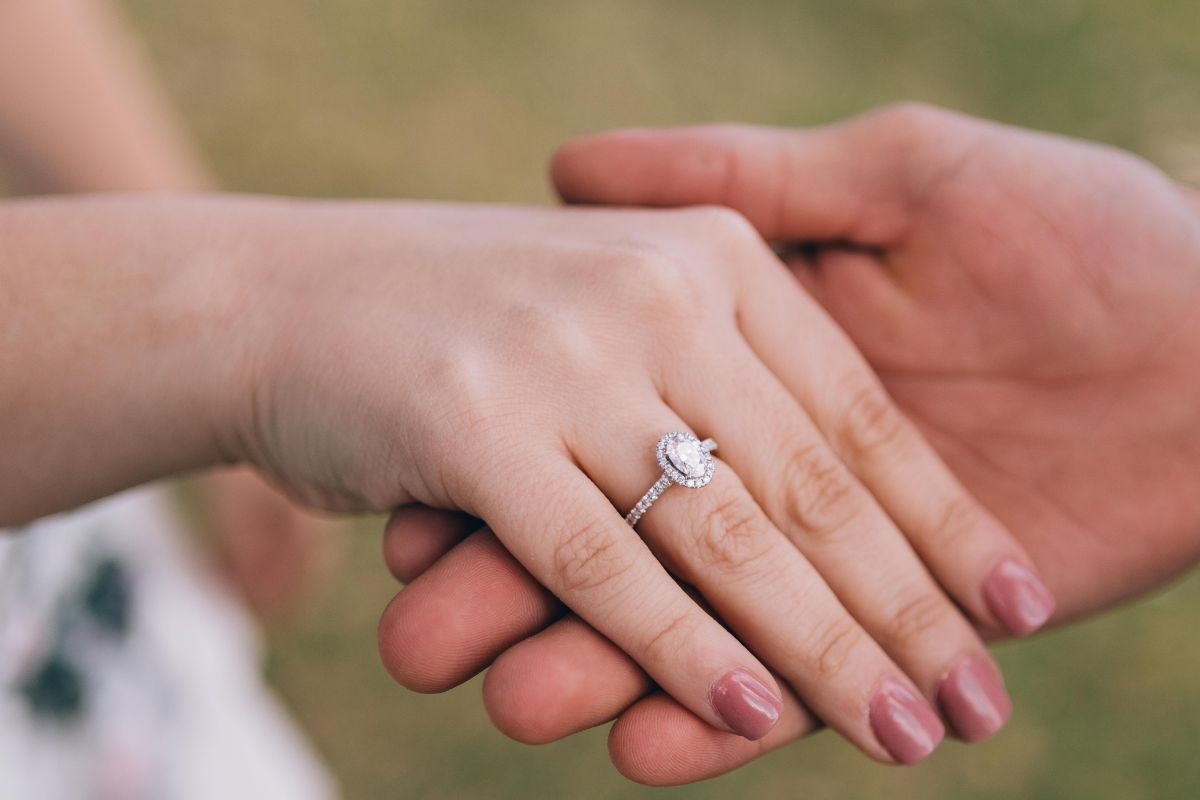
When you place a ring on your right ring finger, it often carries a significance that varies from the traditions of wearing rings on your left hand. Let's explore what these meanings could be in the context of personal expression and cultural practices.
Distinct Meanings of Right Hand Rings
- Personal Statement: Rings on your right hand often serve as a reflection of your personal style or a statement of independence. Unlike the left hand, which is frequently associated with marital status and tradition, rings on your right hand can represent your achievements, milestones, or even your personality traits.
- Fashion and Style: Utilizing the right hand for rings allows for more versatility in style. You might see a trend called a stack, where multiple rings are worn on the same finger to create a fashion statement. This can be a striking way to showcase your unique taste and can vary from subtle to bold expressions.
- Cultural Significance: In some cultures, wearing a ring on your right thumb or finger can have specific implications. For example, in certain professions or lifestyles, a ring on the right thumb is seen as a symbol of wealth or influence. It's important to be mindful of these cultural nuances to fully understand the context of right-hand rings.
- Symbol of Commitment: Although the left hand is traditionally reserved for wedding rings, right-hand rings can also signify a commitment but to different aspects of life. This could be a promise to yourself, a dedication to a cause, or an expression of your professional dedication.
Keep in mind, the way you choose to wear rings on your right hand is a personal decision and is often seen as a direct way to communicate unspoken aspects about your identity to the world.
Consumer Behavior and Preferences
When you choose a ring for your right ring finger, your personal preferences are influenced by a variety of factors, including material selection and fashion trends.
Material and Gemstone Selection
Gold, silver, and platinum are popular choices for rings. Your choice often depends on factors like durability, color preference, and potential for skin allergies. For instance, platinum's density and natural white luster make it an appealing choice for those who prefer a robust ring that withstands everyday wear.
- Gold: Often chosen for its classic appeal and coloring options (yellow, white, rose).
- Silver: A budget-friendly option known for its shiny, reflective finish.
- Platinum: Prized for its strength and status; heavier and more durable than gold or silver.
Gemstone selection is another critical aspect. You might prefer a diamond for its brilliance and the statement it makes, or you might opt for other gemstones which can be chosen based on birthstone, color, or even purported healing properties.
Fashion and Lifestyle Factors
The ring you wear on your right ring finger can be a reflection of your lifestyle and fashion sense. You might select a design that aligns with your professional image or choose something more casual that suits your everyday activities.
- Professional: Sleek designs with minimal gemstones for a subtle effect.
- Casual: Bold or intricate designs that express personal style and creativity.
Ultimately, your preference for a ring on your right ring finger is shaped by a unique combination of these attributes, reflecting your individuality in a world of diverse choices.
Postscript
In the context of wearing a ring on the right ring finger, "Postscript" might symbolize an additional personal or cultural significance you have attached to the jewelry you adorn. Traditionally, rings can denote a variety of statuses and intentions. Below are some meanings that might be attributed to rings on the right ring finger:
- Personal Significance: A ring on this finger could represent a personal milestone or achievement that is significant to you.
- Professional Affiliation: Certain professions use rings to symbolize qualifications or affiliations, such as engineering or architecture.
- Cultural or Regional Symbolism: In some cultures, wearing a ring on the right ring finger carries a specific cultural meaning, such as marital status or family heritage.
It is important to note that the interpretation of this ring placement is dynamic and can vary greatly depending on individual perspective and context. If you choose to wear a ring on your right ring finger, be conscious of the potential meanings it may convey to others around you.
Frequently Asked Questions
When you explore the nuances of ring wearing, especially on the right ring finger, you encounter rich symbolism and cultural meanings.
What are the implications of wearing a ring on the right ring finger for unmarried individuals?
Wearing a ring on the right ring finger, if you're not married, often signifies commitment to oneself or a non-traditional symbolic gesture. It may also indicate a professional achievement or personal milestone.
How does the placement of a ring on the right ring finger differ spiritually from other fingers?
The right ring finger doesn't have the same widespread marital connotation as the left. Spiritually, it could symbolize power and responsibility, or a conscious decision to lead a balanced and centered life.
In terms of symbolism, how is the right ring finger perceived in various cultures?
In some cultures, rings on the right ring finger might signify professional status or even a family crest. In others, like Eastern Orthodox Christianity, it's customary to wear wedding rings on the right hand.
What does it signify when someone wears their wedding ring on their right hand instead of their left?
Wearing a wedding ring on the right hand often relates to cultural traditions, like those found in Eastern European countries. It could also be a personal preference or a symbol of widowhood.
Can the choice of which finger to wear a ring on reveal details about a person's relationship status or style?
Absolutely. Rings worn on different fingers can convey messages about your relationship status or fashion style. For instance, thumb rings might suggest a bold personality, while pinky rings often have associations with professional identity.
What could be the reasons behind a woman choosing to wear a ring on her right middle finger?
A ring on the right middle finger doesn’t typically signify engagement or marriage and might be chosen for its aesthetic value. It might also represent a personal accomplishment or symbolize individuality and a sense of self.
Checkout some of our top collections:
- Moissanite Engagement Rings
- Moissanite Earrings
- Moissanite Bracelets
- Moissanite Solitaire Engagement Rings
- Moissanite Mens Engagement Rings
- Moissanite Princess Cut Stones
- Lab Grown Engagement Rings
- Lab Grown Diamond Earrings
- Lab Grown Diamond Wedding Bands

